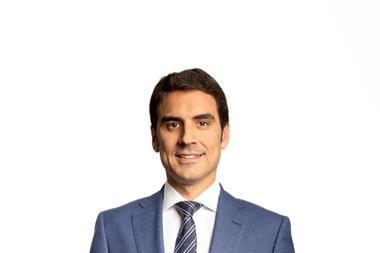While some funds are looking overseas, a culture of conservatism and caution keeps the focus on the domestic market, says Lynn Strongin Dodds
Real estate investing is not a new direction for Swedish pension funds. Many have been pursuing this course for more than 20 years. The main difference today is that some of the larger funds are beginning to look beyond their home market. It is doubtful, though, that their actions will signal a new era of global investing.
Ubbe Strihagen, international director, Aberdeen Property Investors, says: "Historically, pension funds have had a home bias in their property allocations, but in the last couple of years we are seeing a stronger interest in international real estate through indirect investing. Total asset allocation to real estate is between 3% and 15% of an overall portfolio, with the average being around 8%. International property exposure is still slim, and on average is less than 10% of the property allocation. For a truly risk diversified portfolio, the international allocation should be above 50%, so there is a need for reallocation for most institutions."
Hans Krig, investment analyst and asset manager, Nordic markets at ING Real Estate in Stockholm, expects "pension funds to move away from the traditional direct investing in domestic properties to indirect investing in a wider geographical spread, first in Europe, then North America and also Asia and other markets as they mature. In general, it will continue to be directed towards core or core plus funds and it will be a gradual process."
One of the most prominent funds to take the international plunge is AP3, the €24.3bn Swedish national pension buffer fund, which recently made its first foray into the indirect international property arena. This was mainly through investments in international timberland funds in South America, North America and Oceania. Previously, AP3 had only invested in property through the AP-funds' co-owned property firm, AP Fastigheter.
Although AP3 will not divulge where its next investments will be, more commitments will follow. The end game is eventually to have the property portfolio equally split between investments in Sweden and abroad. Breaking it down geographically, Europe and Asia will be the first destinations, followed by North America.
In general, AP3 is a relative newcomer to real estate investing, having forged a path in 2001 buying directly in the domestic commercial office and retail space. The impetus to look beyond its borders has been driven by the classic diversification philosophy of creating a varied and mixed basket of assets to generate better risk adjusted returns.
However, as Christina Kusoffsky Hillesöy, spokesperson for AP3, points out, the fund is not rushing into any decisions and is adopting a measured approach.
Kusoffsky Hillesöy adds: "Our goal is to increase our exposure to real estate, including timberland, to 8.5% of the total portfolio. We will build this slowly and it will take some years to achieve. According to AP3 figures, as of 30 June 2007, the market value of its property investments, which includes timberland, amounted to SEK5.6bn (€600m) out of a total portfolio of SEK227.7bn."
Meanwhile, other heavyweight contenders such as Alecta, an occupational pensions fund manager with assets under management of SEK429bn, continues to review its options. While foreign real estate has accounted for about half of its 7% exposure to the asset class, there has been talk that the group is looking beyond its traditional stomping grounds of the US, UK and the Netherlands. At the moment, it is keeping tight-lipped about its plans.
Other players, such as AMF Pension, with SEK284bn of assets under management, are happy with the status quo and are looking for opportunities domestically. The fund, which has been investing in real estate since 1986, does plan to increase its exposure to 10% from its current 7% over the long term.
Mats Hederos, head of real estate at AMF Pension, explains the "fund's philosophy is to have an impact on the development of the return. Our real estate assets are concentrated primarily on markets in which we have an adequate level of expertise and understanding for the market's way of functioning. We consider closeness to be essential for high return. This is a central part of our investment policy and also reflects in the fact that the company's entire asset management is handled in-house."
One of the main reasons why some pension funds are reluctant to step outside their home country is cultural. By nature, most Swedish institutions, especially those that have built substantial direct portfolios, prefer to follow a conservative and cautious track. They rather deal in a market they are not only familiar with but also know how to navigate.
Moreover, many are still carrying the scars of the severe property downturns in the 1980 and 1990s and memories linger in contrast to their UK counterparts who have shaken them off. Some market observers believe the industry will not become more adventurous until a new generation of managers is in place.
It is unlikely that they will throw caution to the wind but they might be more proactive in investing overseas.
Finally, and perhaps equally as important, sticking close to home has brought its rewards. The Swedish property market was one of the last to recover after the stock market crash in the beginning of the century but it has been making up for poor performance in the past two years. Figures from Investment Property Databank reveal that commercial property in Sweden in 2006 climbed 16.2%, which was the biggest total return in six years. Industrial properties, for the first time in 10 years, were the star performers, with a total return of 25.4% followed by retail at 18.5%.
Charlotte Stromberg, managing director, Sweden, of Jones LaSalle Lang, a real estate services and money management firm, says: "The returns were extremely strong last year and supported by attractive fundamentals such as robust growth, low unemployment and increasing disposable income. Looking ahead, the main worry is not about the exposure to the US sub-prime market but the impact it could have on the economy. The base case is that the economy is intact but it is too early to predict the outcome."












